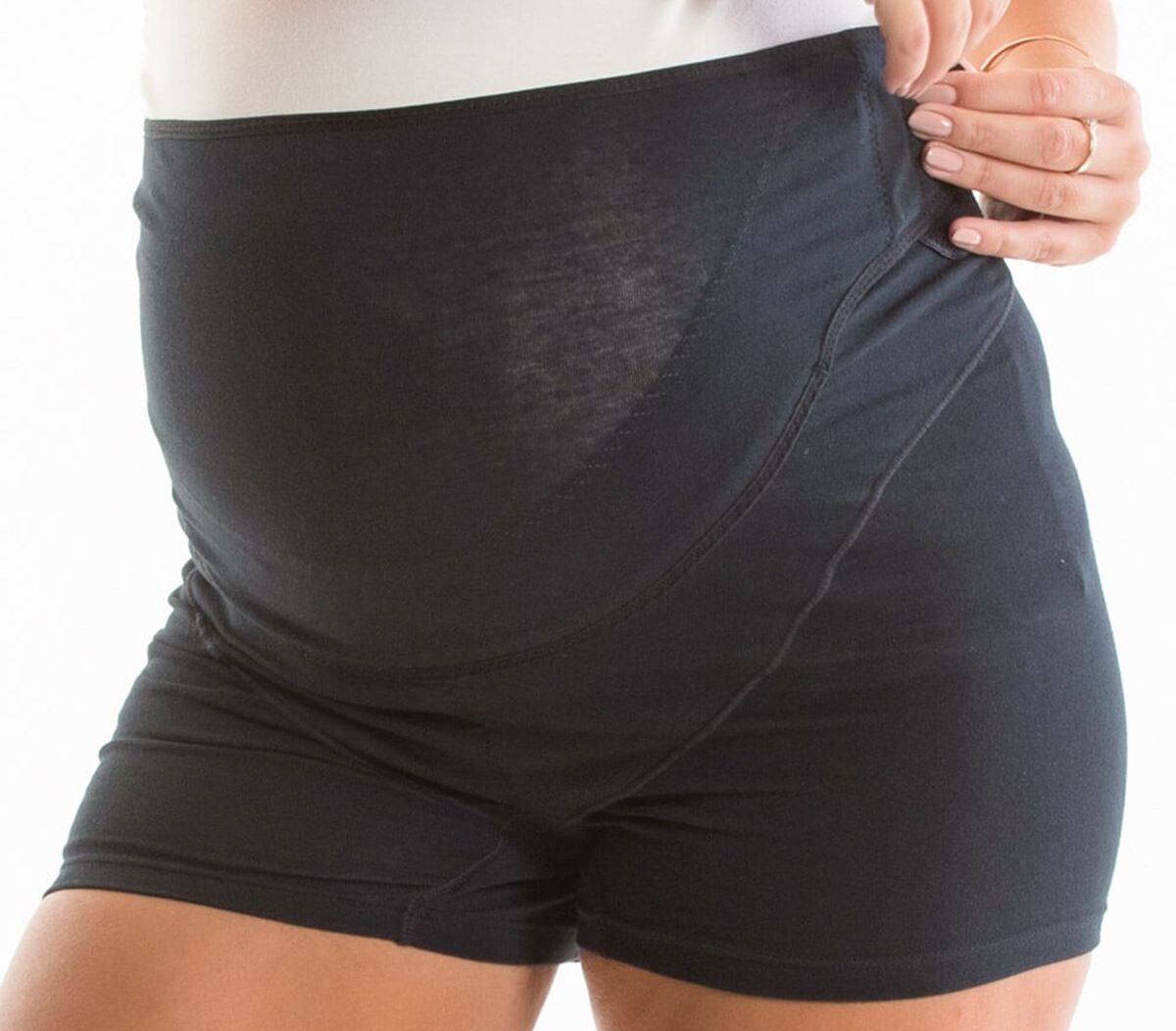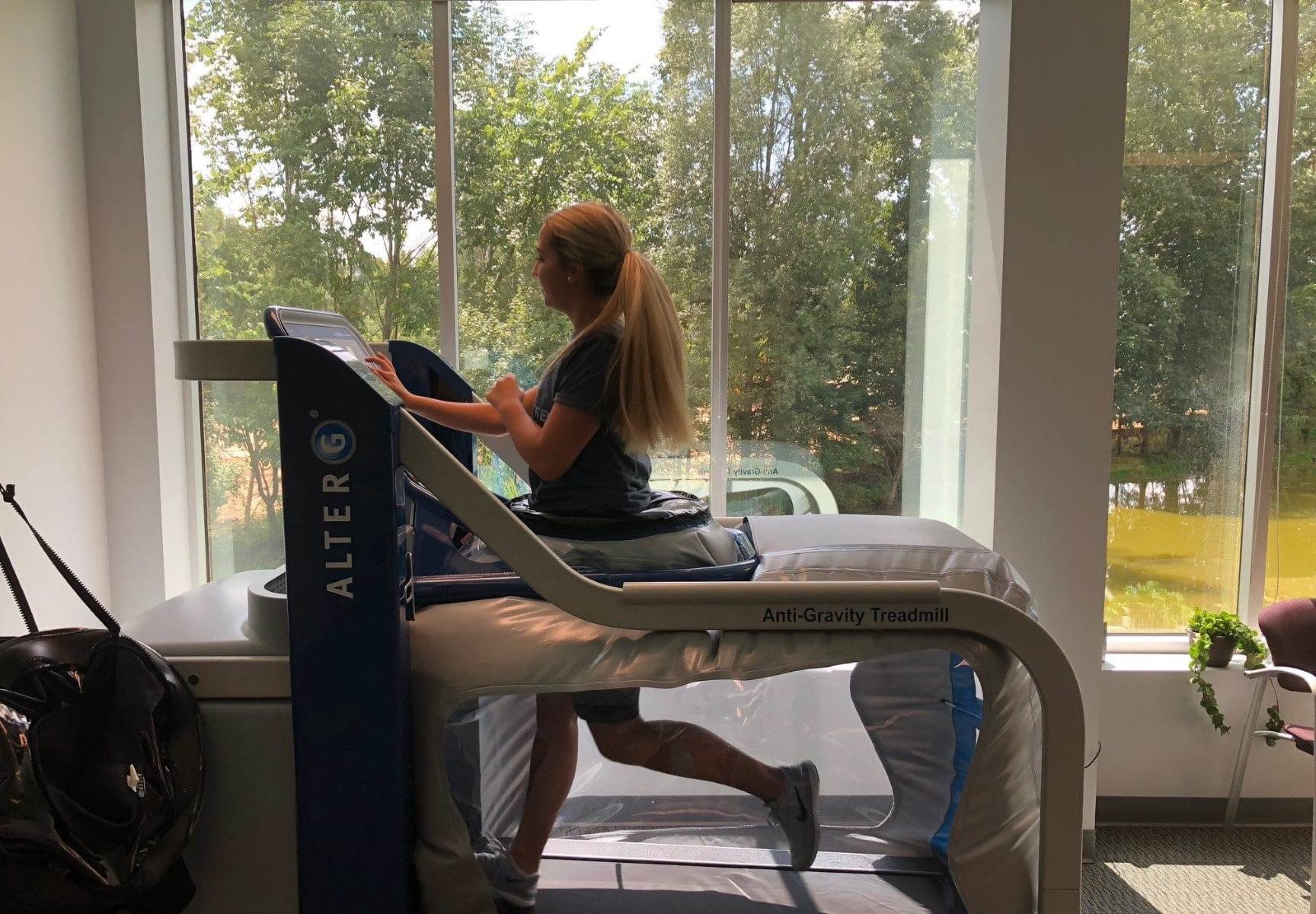Home>Misc>Featured>How Long After Gynecomastia Surgery Can I Workout


Featured
How Long After Gynecomastia Surgery Can I Workout
Modified: August 19, 2023
Find out the optimal time frame for resuming workouts after gynecomastia surgery in order to achieve the best results. Featured tips for a safe and effective recovery.
Introduction
Welcome to our comprehensive guide on gynecomastia surgery and its impact on your workout routine. Gynecomastia, commonly known as enlarged male breasts, can be a distressing condition for many men. It often leads to feelings of self-consciousness and limits their ability to confidently participate in physical activities, including exercise.
Gynecomastia surgery, also known as male breast reduction surgery, is a common solution for individuals looking to address this condition. The surgical procedure involves removing excess breast tissue and reshaping the chest area to achieve a more masculine contour. While the surgery itself can be life-changing, it is essential to understand the recovery process and how it may affect your ability to work out.
In this guide, we will walk you through the recovery process after gynecomastia surgery, addressing the potential risks and complications that may arise. Furthermore, we will discuss when it is safe to resume physical activity and provide guidelines to help you gradually reintroduce exercise into your routine. So, let’s dive in and find out how long after gynecomastia surgery you can start working out again!
Understanding Gynecomastia Surgery
Gynecomastia surgery is a cosmetic procedure designed to reduce the size of enlarged male breasts. It is typically performed under general anesthesia and involves the removal of excess breast tissue, fat, and skin from the chest area. The goal of the surgery is to create a flatter and more masculine contour, restoring self-confidence and improving the overall appearance of the chest.
Gynecomastia can be caused by a variety of factors, including hormonal imbalances, obesity, certain medications, or underlying medical conditions. It is essential to consult with a qualified surgeon who specializes in gynecomastia to determine the underlying cause of the condition and develop an appropriate treatment plan.
The surgical technique used for gynecomastia varies depending on the severity of the condition. In mild cases, liposuction may be sufficient to remove excess fat deposits. This technique involves making small incisions and using a thin tube to suction out the fat. For more severe cases, a combination of liposuction and surgical excision may be necessary to remove excess breast tissue and reshape the chest.
As with any surgical procedure, gynecomastia surgery carries some risks and potential complications. These can include bleeding, infection, scarring, changes in nipple sensation, asymmetry, and dissatisfaction with the cosmetic outcome. It is essential to have a thorough discussion with your surgeon about the potential risks and benefits of the procedure before making a decision.
Overall, gynecomastia surgery can be an effective solution for individuals struggling with enlarged male breasts. It is important to have realistic expectations about the outcomes of the surgery, as well as to follow your surgeon’s post-operative instructions to ensure a smooth recovery. In the next section, we will discuss the recovery process after gynecomastia surgery and when you can safely resume your workout routine.
Potential Risks and Complications
Like any surgical procedure, gynecomastia surgery carries certain risks and potential complications. While these risks are relatively rare, it is important to be aware of them and discuss them with your surgeon before undergoing the surgery.
One of the most common risks associated with gynecomastia surgery is bleeding. While the surgeon will take precautions to minimize bleeding during the procedure, it is possible for some bleeding to occur after the surgery. In rare cases, this may require additional medical intervention.
Another potential complication is infection. Although stringent sanitation measures are followed during gynecomastia surgery, there is still a small risk of developing an infection at the surgical site. If this occurs, your surgeon will likely prescribe antibiotics to treat the infection.
Scarring is another consideration when undergoing gynecomastia surgery. Incisions are necessary to remove excess tissue and reshape the chest, which can result in visible scars. However, skilled surgeons will make incisions in discreet locations to minimize the visibility of scars. Over time, these scars typically fade and become less noticeable.
Changes in nipple sensation can occur after gynecomastia surgery. Some individuals may experience temporary numbness or altered sensation in the nipples or surrounding areas. In most cases, this resolves on its own within a few weeks or months. However, in rare instances, permanent changes in nipple sensation may occur.
Asymmetry is another potential complication of gynecomastia surgery. Achieving perfect symmetry is challenging, and some degree of asymmetry may persist even after the surgery. However, skilled surgeons strive to create a balanced and natural-looking result.
Finally, dissatisfaction with the cosmetic outcome is a potential risk. While gynecomastia surgery can significantly improve the appearance of the chest, it is important to have realistic expectations about the results. It is crucial to have open and honest communication with your surgeon to ensure that your aesthetic goals align with what can be achieved through the procedure.
It is important to note that while these risks exist, the majority of individuals who undergo gynecomastia surgery experience a smooth recovery and are satisfied with their results. Discussing these potential risks and complications with your surgeon will help you make an informed decision about whether gynecomastia surgery is the right option for you.
Recovery Process After Gynecomastia Surgery
The recovery process after gynecomastia surgery is a crucial period that allows your body to heal and adjust to the changes made during the procedure. It is essential to follow your surgeon’s post-operative instructions closely to ensure a smooth and successful recovery.
Immediately after the surgery, you will likely be monitored in a recovery area until the effects of anesthesia wear off. Your surgeon may place dressings or a compression garment over the treated area to minimize swelling and support the chest during the healing process. You will be given specific instructions on how to care for the incisions, manage discomfort, and when to follow up with your surgeon.
During the first few days after the surgery, it is normal to experience some pain, swelling, and bruising in the chest area. Your surgeon may prescribe pain medication to manage any discomfort. It is important to rest and avoid any strenuous activities during this initial recovery period.
Over the following weeks, the swelling and bruising will gradually subside. It is important to continue wearing the compression garment as instructed, as it helps minimize swelling and supports the chest area. Your surgeon will likely schedule follow-up appointments to monitor your progress and remove any stitches, if necessary.
It is crucial to give your body ample time to heal before resuming physical activities, including workouts. Your surgeon will provide you with specific guidelines on when it is safe to start exercising again. Generally, most individuals can gradually resume light exercise activities, such as walking, two to three weeks after surgery.
It is important to note that every individual’s recovery process is unique, and your surgeon’s instructions may vary. It is essential to communicate regularly with your surgeon and inform them of any issues or concerns you may have during the recovery period.
In the next section, we will explore the question of when you can start working out after gynecomastia surgery and discuss the guidelines for resuming physical activity.
When Can I Start Working Out?
After gynecomastia surgery, one of the most common questions individuals have is when they can safely resume their workout routine. It is crucial to allow your body enough time to heal and recover before engaging in any strenuous physical activities.
The timeline for when you can start working out again will vary depending on the individual and the extent of the surgery. Generally, most surgeons recommend waiting at least four to six weeks before gradually reintroducing exercise into your routine.
During the initial weeks of recovery, it is important to focus on rest and allowing your body to heal. Engaging in intense physical activities too soon can increase the risk of complications, delay the healing process, and potentially compromise the final outcome of the surgery.
Furthermore, it is important to note that every person’s recovery process is unique, and your surgeon’s recommendations may differ. It is crucial to follow your surgeon’s specific instructions for when it is safe to start working out again, as they will take into account your specific circumstances and the extent of the surgery.
Once your surgeon gives you the green light to start exercising, it is important to ease back into your routine gradually. Begin with light activities, such as walking or gentle stretching, and gradually increase the intensity and duration of your workouts over time.
It is normal to experience some discomfort or mild soreness during the initial stages of returning to exercise. Pay attention to your body and listen to any signals of pain or overexertion. If you experience any unusual or severe pain, it is important to stop and consult with your surgeon.
Additionally, it is crucial to wear a supportive sports bra or compression garment during your workouts to provide added support to the chest area and minimize any potential discomfort or swelling.
Remember, the goal is to have a smooth and successful recovery while achieving optimal results from your gynecomastia surgery. By following your surgeon’s guidelines and gradually resuming physical activity, you can help ensure a safe and effective transition back into your workout routine.
Gradual Resumption of Physical Activity
When it comes to resuming physical activity after gynecomastia surgery, a gradual approach is key. Your body needs time to adjust and heal, and gradually increasing the intensity and duration of your workouts can help minimize any potential complications or setbacks.
Here are some guidelines to follow when gradually reintroducing physical activity after gynecomastia surgery:
- Listen to your body: Pay close attention to how your body feels during and after physical activity. If you experience any pain, discomfort, or swelling, it is important to take it as a sign to slow down or modify your workout.
- Start with low-impact exercises: Begin with low-impact exercises that put less strain on the chest area, such as walking, yoga, or light cardio. These exercises help improve circulation and build cardiovascular endurance without putting excessive stress on the healing incisions.
- Avoid heavy lifting: Avoid heavy lifting and activities that put significant strain on the chest muscles, such as weightlifting or intense upper body workouts. These activities can strain the incisions, increase swelling, and compromise the healing process.
- Focus on core and lower body exercises: While the chest area is healing, you can shift your focus to exercises that target the core, lower body, and other muscle groups. This allows you to maintain overall fitness and strength while giving the chest area adequate time to heal.
- Gradually increase intensity: As your body continues to heal and adapt to physical activity, gradually increase the intensity and duration of your workouts. This can include incorporating resistance training, high-intensity interval training (HIIT), or more challenging cardio exercises.
- Wear a supportive garment: Throughout the recovery process and even when you start working out again, wearing a supportive sports bra or compression garment can provide added support and stability to the chest area. This can help minimize discomfort and reduce the risk of complications.
It is important to note that everyone recovers at their own pace, and individual results may vary. It is essential to follow your surgeon’s specific instructions and recommendations for resuming physical activity, as they will consider your unique circumstances and the extent of the surgery.
By gradually resuming physical activity, listening to your body, and following the guidelines provided by your surgeon, you can safely and effectively incorporate exercise back into your routine after gynecomastia surgery.
Guidelines for Exercise After Gynecomastia Surgery
After gynecomastia surgery, it is important to follow specific guidelines to ensure a safe and successful recovery. Keep in mind that these guidelines may vary depending on your surgeon’s recommendations and your unique circumstances. Here are some general guidelines for exercise after gynecomastia surgery:
- Follow your surgeon’s instructions: Always follow your surgeon’s specific instructions and recommendations for exercise after gynecomastia surgery. They will provide you with personalized guidance based on your individual circumstances and the extent of the surgery.
- Start with light activities: Begin with light activities, such as walking or gentle stretching, to gradually reintroduce physical activity. This helps improve blood circulation, reduce swelling, and promote healing without putting excessive strain on the chest area.
- Avoid activities that strain the chest muscles: Avoid exercises that put significant strain on the chest muscles, such as heavy lifting, push-ups, or chest presses. These exercises can disrupt the healing process and increase the risk of complications.
- Focus on core and lower body exercises: While the chest area heals, you can focus on strengthening and conditioning other parts of your body, such as the core and lower body. This allows you to maintain overall fitness without compromising the healing process.
- Listen to your body: Pay close attention to how your body feels during and after exercise. If you experience any pain, discomfort, or swelling, it is important to stop and rest. Pushing through the pain can lead to further complications and delay the healing process.
- Gradually increase intensity: As your body continues to heal and adapt, slowly increase the intensity and duration of your workouts. Consult with your surgeon to determine when it is safe to progress to more challenging exercises and activities.
- Wear a supportive garment: During exercise, it is essential to wear a supportive sports bra or compression garment to provide added support and minimize discomfort. This can help reduce swelling and promote proper healing.
- Stay hydrated: Drinking an adequate amount of water before, during, and after exercise is crucial to maintain proper hydration levels. Hydration aids in the healing process and prevents excessive fatigue or muscle cramps.
- Follow a balanced diet: Proper nutrition is vital for the healing process and overall recovery. Ensure you follow a well-balanced diet that includes lean protein, fruits, vegetables, and whole grains to support your body’s healing and energy needs.
Remember, the key is to have patience and listen to your body’s signals. Each person’s recovery is unique, and it is important to follow your surgeon’s instructions and recommendations closely to ensure a safe and successful return to exercise after gynecomastia surgery.
Listening to Your Body
One of the most crucial aspects of resuming exercise after gynecomastia surgery is listening to your body. Paying attention to how your body feels and responding to its signals is essential for a safe and successful recovery process.
Here are some key points to keep in mind when it comes to listening to your body after gynecomastia surgery:
- Notice pain and discomfort: Pay attention to any pain or discomfort in the chest area or incision sites during exercise. Mild soreness is normal, but sharp or intense pain is a sign to stop and rest. Pushing through the pain can lead to further complications and delay the healing process.
- Monitor swelling and inflammation: Keep an eye on any swelling or inflammation in the chest area. If you notice excessive swelling or increased inflammation during or after exercise, it may be a sign that you need to reduce the intensity or duration of your workouts.
- Take rest days: Rest days are essential for allowing your body to recover and heal. Use these days to rest and recharge, giving your muscles and incisions time to repair and rebuild. Pushing through fatigue or ignoring the need for rest can increase the risk of injury or hinder the healing process.
- Adjust your exercise intensity: If you find that a particular exercise or activity is causing discomfort or strain on the chest area, modify or substitute it for a more comfortable alternative. Listen to your body’s signals and make adjustments accordingly to protect the healing tissues.
- Communicate with your surgeon: It is crucial to maintain open and regular communication with your surgeon throughout the recovery process. If you have any concerns, questions, or experience any abnormal symptoms during exercise, reach out to your surgeon for guidance and support.
- Be patient: Recovery takes time, and it is important to be patient with your body. Avoid comparing your progress and timeline to others, as each person’s recovery is unique. Trust the process, follow your surgeon’s instructions, and allow your body to heal at its own pace.
Remember, listening to your body is a vital part of the recovery journey after gynecomastia surgery. By paying attention to any pain, discomfort, or swelling and responding appropriately, you can ensure a safe and effective return to your regular exercise routine.
Final Thoughts
Gynecomastia surgery can be a life-changing procedure for individuals who struggle with enlarged male breasts. It offers the opportunity to regain self-confidence and improve the overall appearance of the chest. However, it is important to approach the recovery process with patience, diligence, and a commitment to following your surgeon’s instructions.
Understanding the surgery, its potential risks and complications, and the recovery process is crucial for a successful outcome. By familiarizing yourself with the guidelines for resuming physical activity after gynecomastia surgery, you can ensure a safe and effective return to your workout routine.
Remember, everyone’s healing process is unique, and it is essential to listen to your body’s signals during exercise. Taking the time to rest, gradually increasing exercise intensity, and wearing a supportive garment can help minimize discomfort and support proper healing.
Throughout your recovery journey, maintain open communication with your surgeon and consult with them for any concerns or questions you may have. They are your best resource for personalized guidance and support.
Ultimately, gynecomastia surgery offers a chance for a fresh start and a renewed sense of confidence. By respecting your body’s healing process and taking the necessary steps to ensure a safe and successful recovery, you can enjoy the long-term benefits of the surgery and embrace a new chapter in your life.









